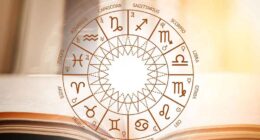Table of Contents
Astrology—so often dismissed as mere superstition or, at best, poetic metaphor—can, in its more reflective applications, offer a curious lens through which to examine the unfolding of a child’s early education. We have seen cases, rare but memorable, where a child’s temperament, as marked in their natal chart, seemed to clash inexplicably with the rigid structure or ethos of a particular school. In contrast, there were moments of near-miraculous alignment: a sensitive Moon-in-Pisces child flourishing in an arts-focused, emotionally attuned environment; or a Mars-driven Aries thriving where challenge and independence were not only encouraged but vitalized. What follows is a modest exploration of how this cosmic chart might be read—not as fate, but as an invitation—to understand better the places where a child might not just learn, but belong.
When Sarah set out to find a new school for her daughter Emma, she hadn’t expected it to be such a bewildering affair. There were brochures piling up on the kitchen table, websites bookmarked and forgotten, and opinions from all directions—each one louder than the last. Emma, at eleven, was bright, inquisitive, and emotionally nuanced—traits that, curiously, seemed to flounder within the strict, outcome-driven system of her current school. She often came home withdrawn, her once effusive nature dulled by the weight of conformity.
It was almost by accident that Sarah visited an old astrologer who lived in a quiet corner of town, with timeworn books and a brass telescope pointed at the sky. He spoke softly, studying Emma’s chart—the fiery Aries sun and the gentle Cancer moon—and said, “Your daughter needs a place where she can run free, but also rest her heart.”
The suggestion was unconventional: a progressive school that emphasizes project-based learning and strong emotional support. Within weeks of enrollment, Emma began to bloom. She led group presentations with confidence, formed gentle, mutual attachments with her teachers, and once again filled the house with stories and questions.
Assessing School Culture Through Astrology
A school’s culture—encompassing its core values, teaching methods, and social dynamics—can be explored through an astrological perspective to assess compatibility. For instance, a school that embodies the traits of Jupiter (representing growth, exploration, and optimism) is likely a good fit for students with prominent Sagittarius or Pisces placements, who thrive on big-picture thinking. On the flip side, a school characterized by Saturnian qualities (like discipline, structure, and tradition) would resonate more with students who embody Capricorn or Virgo energies. Parents can delve into a school’s mission statement, engage with teachers, or attend open houses to gauge its astrological essence, then compare this with their child’s astrological chart for better alignment.
Key Astrological Factors to Consider
To make an informed choice, parents should focus on specific astrological markers that influence academic compatibility. Here are critical factors to evaluate:
- Sun Sign: Reflects the child’s core identity and how they shine. A Leo Sun needs opportunities for leadership, while a Scorpio Sun craves depth and intensity.
- Mercury Placement: Indicates learning and communication style. A Mercury in Virgo loves details and analysis, while Mercury in Sagittarius prefers broad, philosophical discussions.
- Moon Sign: Governs emotional needs. A Capricorn Moon seeks stability and clear expectations, whereas a Libra Moon thrives on harmony and social connection.
- Rising Sign: Shapes first impressions and social fit. An Aquarius Rising might vibe with quirky, innovative peers, while a Taurus Rising prefers calm, predictable settings.
- Jupiter and Saturn: Highlight growth potential and challenges. Jupiter shows where a child feels inspired, and Saturn points to areas needing discipline.
By cross-referencing these with a school’s environment, parents can pinpoint where their child will thrive.
Timing the Transition with Transits
Astrological transits, which refer to the current movements of planets, can significantly impact the timing of switching schools, making the transition smoother for kids. For instance, when Jupiter is moving through a child’s 3rd house—focused on learning and communication—it could indicate a great opportunity to start at a new school, as it promotes optimism and growth. Conversely, if Saturn is squaring the child’s Sun, it might suggest potential challenges, hinting that it may be better to wait.
Parents don’t need to dive deep into astrology; a simple transit report or a quick consultation can point out the best times to align the school change with positive cosmic energy.
Balancing Astrology with Practical Considerations
While astrology offers valuable insights into a child’s inherent nature and educational compatibility, it’s essential to balance these cosmic cues with grounded, real-world factors. After all, a successful academic journey depends on both fate and free will.
1. Astrology is a Tool, Not a Rulebook
Astrology can guide you toward a better understanding of your child’s:
- Learning style
- Emotional needs
- Social preferences
- Ideal pace and environment for growth
But it shouldn’t override practical realities such as location, affordability, academic track record, or safety. Think of astrology as a filter, not a final verdict.
2. Visit, Observe, and Feel the Space
Before enrolling, take the time to:
- Visit the school in person
- Talk to teachers and staff
- Observe classroom dynamics
- Check how your child reacts to the space
Even if a school looks astrologically aligned, if your child feels anxious or disengaged during a visit, that’s a clear sign to reconsider.
Children grow, and so do their needs. A school that’s astrologically ideal at age six might not serve the same purpose at age thirteen. Keep checking in—both with your child and your astrologer—to adjust decisions as needed.
Compatibility Between Child and School Vibe
Every school has its unique “energy signature.” This includes things like when the school was established, the principal’s character, the way teachers instruct, and even the school’s logo and colors. All of these can be analyzed through astrology to determine if they match well with a child’s energy. If there’s a mismatch—like a child who thinks slowly and deeply, influenced by Saturn, being put into a quick and stressful school environment—it can lead to problems like exhaustion or behavioral challenges.
If you’re really getting into it, Vedic astrology and Vastu Shastra complement each other nicely. The layout and energy circulation of a school building can play a major role in a child’s concentration and well-being. For example, classrooms oriented towards the North or East are believed to enhance focus and create a more positive environment.
Practical Application
Here’s how astrology can assist in narrowing down options:
- Shortlist schools based on your logistical and educational preferences.
- Match the child’s chart with the school’s vibe, ethos, and setup.
- Consult an experienced astrologer for personalized insight—especially one familiar with educational astrology.
Final Thought
Choosing the right school isn’t just about academic excellence—it’s about harmonizing the child’s inner potential with their outer environment. And sometimes, the stars know just where your child will shine brightest.








